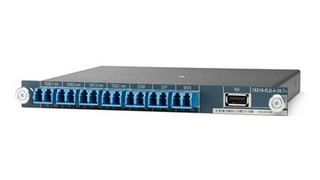In the modern era of IT Hardware and Computer Hardware, efficient data management and transmission are critical for seamless operations. One device that plays a central role in this process is the Multiplexer. Multiplexers are widely used in digital systems, networking, and telecommunications to optimize signal management, reduce hardware requirements, and enhance data throughput. Understanding the working principles, types, applications, and advantages of multiplexers is essential for IT professionals and hardware enthusiasts.
Understanding the Multiplexer
A Multiplexer, often abbreviated as MUX, is a digital switching device that selects one input from multiple input lines and forwards it to a single output line. The selection of inputs is controlled by control signals, also known as select lines. Essentially, a multiplexer allows multiple data signals to share a single communication channel or hardware component, thereby increasing efficiency and reducing costs.
In IT Hardware and Computer Hardware systems, multiplexers are fundamental for optimizing resource utilization. Without multiplexers, networks and computing systems would require separate lines for each signal, resulting in increased complexity, space consumption, and hardware costs.
Types of Multiplexers
Multiplexers can be classified into several types based on the number of input lines, select lines, and functionality. Understanding these types is crucial for designing and deploying efficient IT Hardware and Computer Hardware solutions.
1. 2-to-1 Multiplexer
A 2-to-1 multiplexer has two input lines and one output line. One select line determines which input is passed to the output. This simple form of MUX is commonly used in basic digital circuits and logic systems.
2. 4-to-1 Multiplexer
A 4-to-1 multiplexer has four input lines, one output line, and two select lines. The select lines control which of the four inputs is transmitted to the output. This type is widely utilized in small-scale IT Hardware projects and digital switching applications.
3. 8-to-1 Multiplexer
An 8-to-1 multiplexer expands on the concept by offering eight input lines and one output line. Three select lines are used for input selection. This multiplexer type is preferred in more complex IT Hardware systems where multiple signals need to be consolidated efficiently.
4. 16-to-1 Multiplexer
For large-scale Computer Hardware systems, the 16-to-1 multiplexer is essential. It can handle 16 input lines and route them to a single output using four select lines. This is particularly useful in networking devices, memory management, and signal routing applications.
5. Analog Multiplexer
Unlike digital multiplexers, analog multiplexers transmit analog signals. They are often used in measurement and data acquisition systems, where analog signals from sensors or instruments need to be transmitted over a single channel.
How Multiplexers Work
The working principle of a multiplexer is based on binary logic. Each select line represents a binary value that corresponds to a specific input line. When the select lines are set to a particular binary combination, the multiplexer connects the corresponding input to the output.
For instance, in a 4-to-1 multiplexer:
- Select lines S1 and S0 determine which input (I0, I1, I2, or I3) is routed to the output.
- If S1S0 = 00, input I0 is connected.
- If S1S0 = 01, input I1 is connected, and so on.
This process allows a single output line to carry data from multiple sources without requiring separate lines for each input, which is a significant advantage in IT Hardware design.
Applications of Multiplexers in IT Hardware
Multiplexers have extensive applications in IT Hardware and Computer Hardware due to their ability to manage multiple signals efficiently. Some notable applications include:
1. Data Routing in Networking
Multiplexers are crucial in networking devices for routing data signals from multiple sources to a single output channel. They are used in routers, switches, and hubs to manage network traffic efficiently.
2. Memory Management
In Computer Hardware, multiplexers help manage memory addresses by selecting specific memory locations for read/write operations. This reduces the number of physical connections required between the CPU and memory modules.
3. Telecommunication Systems
Multiplexers are widely used in telecommunications to combine multiple communication channels into a single channel for transmission. This enables efficient use of bandwidth and reduces infrastructure costs.
4. Signal Processing
In IT Hardware applications like digital signal processing (DSP), multiplexers are used to select and route signals from multiple sources to processing units. This improves system performance and simplifies circuit design.
5. Microprocessor Communication
Multiplexers play a key role in microprocessor systems by selecting input signals for the CPU. This allows for efficient processing of data from multiple peripherals such as sensors, keyboards, and storage devices.
Advantages of Using Multiplexers
The use of multiplexers in IT Hardware and Computer Hardware systems offers several advantages:
1. Reduced Hardware Complexity
Multiplexers allow multiple input signals to share a single output line, reducing the number of physical wires and hardware components needed.
2. Cost Efficiency
By minimizing the number of required components, multiplexers lower the cost of IT Hardware systems and network infrastructure.
3. Improved Data Management
Multiplexers enable organized and controlled transmission of multiple signals, improving overall data management in computing and networking systems.
4. Scalability
Multiplexers can be scaled to handle more inputs as system requirements grow. This flexibility makes them ideal for both small-scale and large-scale IT Hardware projects.
5. Enhanced Performance
By efficiently managing data routing and signal selection, multiplexers improve the performance and speed of Computer Hardware systems.
Multiplexers in Digital Logic Design
In digital logic design, multiplexers are considered essential building blocks. They are used to implement Boolean functions and decision-making circuits efficiently. Engineers use multiplexers to reduce the number of logic gates required in a circuit, simplifying design and improving reliability.
1. Logic Function Implementation
A multiplexer can implement any Boolean function by connecting inputs to logic values and controlling the select lines according to the function’s truth table. This method is highly efficient for IT Hardware designers working on complex logic systems.
2. Control Systems
Multiplexers are used in control systems to select signals from multiple sensors and direct them to the controller for decision-making. This application is common in automation and embedded systems.
3. Data Acquisition Systems
In data acquisition, multiplexers enable the collection of signals from multiple sensors over a single analog-to-digital converter (ADC) input. This reduces the number of ADC channels needed, simplifying hardware design.
Key Considerations in Multiplexer Selection
When selecting a multiplexer for IT Hardware or Computer Hardware applications, several factors should be considered:
- Number of Input Lines – The number of signals that need to be managed determines the MUX type (2-to-1, 4-to-1, 8-to-1, etc.).
- Select Lines – The number of select lines must match the input count for proper operation.
- Propagation Delay – This is the time it takes for a selected input to appear at the output. Lower delays are preferable for high-speed systems.
- Power Consumption – Multiplexers used in portable or energy-efficient systems must have minimal power consumption.
- Signal Type – Choose between digital and analog multiplexers depending on the nature of input signals.
Future Trends in Multiplexers
As IT Hardware and Computer Hardware systems evolve, multiplexers continue to play a crucial role in innovation. Trends include:
- Integration with FPGA and ASIC Designs – Multiplexers are increasingly integrated into programmable logic devices for custom digital circuits.
- High-Speed Data Multiplexers – New designs support higher data rates, critical for modern networking and communication systems.
- Low-Power Multiplexers – Focused on energy efficiency for mobile and embedded systems.
- Optical Multiplexers – Used in fiber-optic communication systems for ultra-fast data transmission over long distances.
Conclusion
Multiplexers are indispensable components in IT Hardware and Computer Hardware systems. They offer efficient data management, cost-effective hardware design, and improved system performance. From digital logic circuits to telecommunication networks, the applications of multiplexers are vast and continue to expand with technological advancements.
For IT professionals, engineers, and hardware enthusiasts, understanding multiplexers is essential for designing reliable, efficient, and scalable computing and networking solutions. The role of multiplexers in enhancing data transmission and signal management cannot be overstated, making them a cornerstone of modern hardware architecture.








